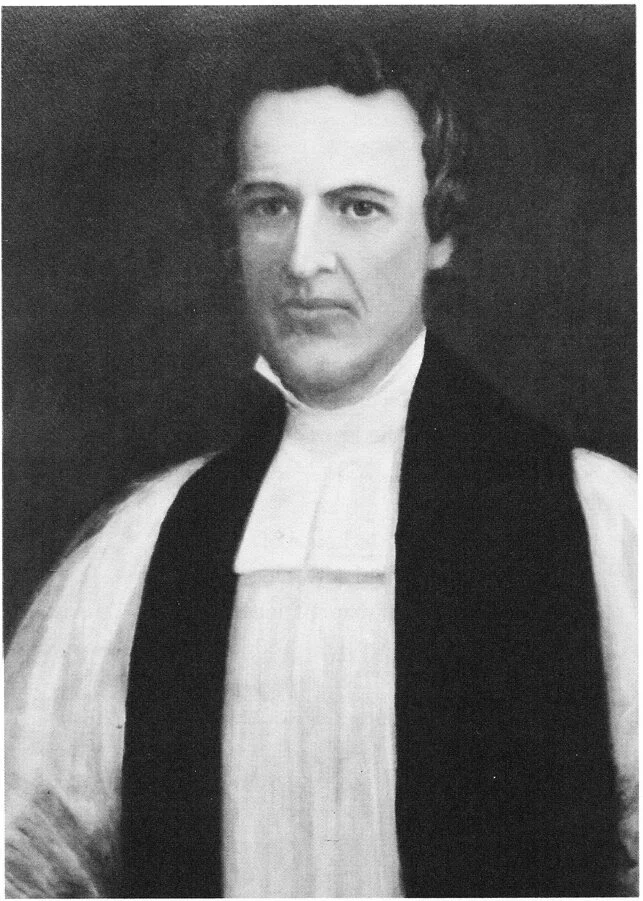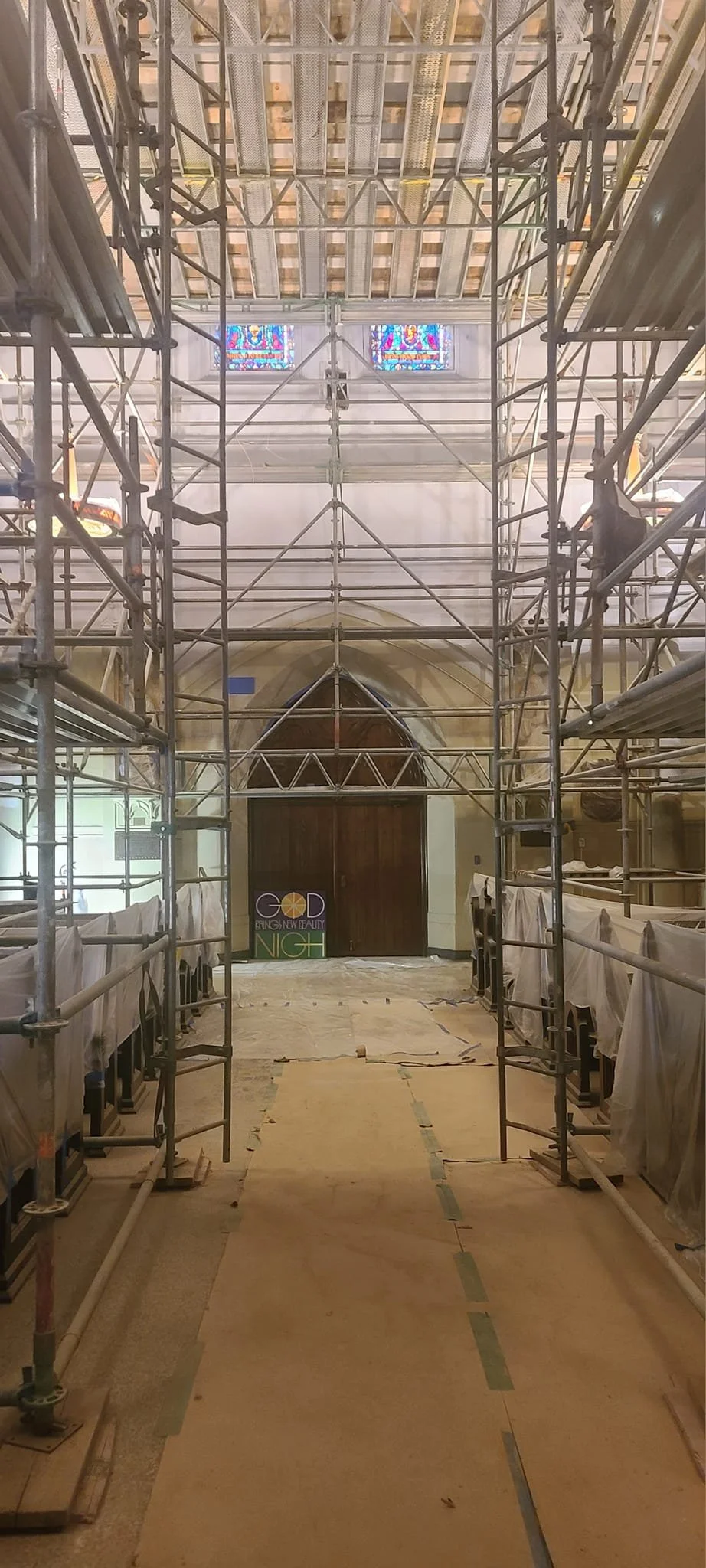
History
Bishop Quintard
Second Bishop of TN
The Founding of the Cathedral
Bishop Otey
First Bishop of TN
1857: St. Mary’s Church, a small wooden structure, was erected through the efforts of the first Bishop of Tennessee, James Harvey Otey, and the women of Calvary Church.
Thanksgiving Day 1857: Founding Day-- First wardens & vestrymen are elected and the first Rector, Rev. Richard Hines arrives.
Ascension Day- May 13, 1858: St. Mary’s is consecrated by Bishop Otey and “commissioned to spread the gospel in the valley of the Mississippi… even unto the river”. St. Mary’s was admitted to the Diocese later that month and the official shield bore the motto, “Unsque Ad Flumen”— “even unto the river”.
1862: The Civil War. Federal forces occupy Memphis and General William T. Sherman attends services at St. Mary’s.
1866: St. Mary’s is selected as the Cathedral Church by Bishop Quintard and Richard Hines is appointed as the first Dean.
January 1, 1871: St. Mary’s becomes the first Episcopal Cathedral in the South and one of the first in the United States.
The Yellow Fever
Constance and her Companions-- The Martyrs of Memphis
August 1873: The Yellow Fever hits right as Five Sisters of the Order of St. Mary arrive to establish a school for girls, which becomes St. Marys School for Girls. Though completely unacclimated, the Sisters remain in Memphis and nurse the sick, help the poor, and care for the children in the Church Home, an orphanage founded by St. Mary’s.
1878: A second devastating breakout of Yellow Fever occurs. Sister Constance and Thecla return to Memphis to aid their Cathedral Companions in caring for the sick. Even after the threat of infection became imminent, Dean George C. Harris and Sister Constance and her Companions refused to leave St. Mary’s and continued to render aid, provide the sacraments, and feed the hungry. The Cathedral is later described as “the religious center of the city” during this time of crisis.
Sister Constance
Sister Hughetta
September 1878: Rev. Charles Carroll Parsons and Rev. Louis S. Schuyler both fall victim to Yellow Fever, with Rev. Schuyler declining only four days after his arrival, leaving only Rev. W.T. Dalzell who arrived from Shreveport, Louisiana. Constance, after months of service, died on September 9th, with the final words “Alleluia, Osanna” which is inscribed on the high altar dedicated to the Sisters. All of her companions-- Sister Ruth, Sister Thecla, Sister Frances, all laid down their lives for the children of the Church Home. Only Sister Hughetta survived. When she died in 1926, her name was added to the high altar.
The feast day for The Martyrs of Memphis is observed every year on September 9th.
The Beginnings of the New Cathedral
1887: The Sisters Chapel is erected by Col. Robert Bogardus Snowden, brother of Sister Hughetta, in honor of their mother.
1898: L.M. Weathers of Weathers and Weathers Memphis begins building the foundations and the crypt of the Cathedral. The cornerstone is placed for the new Cathedral on May 5th by Bishop Thomas F. Gailor, who was a champion of the Cathedral and who weighed heavily into the architectural choices and style.
1906: Weathers and Weathers begins the superstructure of the Cathedral we now know. Services are held in the new nave but the sides of the building remain wooden for another 20 years.
1921: Dean Israel H. Noe becomes Dean and begins a drive to complete the Cathedral. This became a city-wide effort and notably people of many faiths gave to the effort of finishing the building, which begins the legacy of being a house of prayer for all people.
1925: The stained glass window program, which St. Mary’s is known for, begins with artist Len Howard.
January 19, 1926: Opening services are held celebrating the completion of The Cathedral and the second cornerstone is laid, dedicated to Bishop Gailor and described as a “living memorial” to him.
January 24, 1951: 50 years since construction began, The Cathedral is consecrated and the effort is finally finished.

"St. Mary's is builded well. Its walls will defy the ravages of time and the stone of its foundation should last long, but it is built on more than stone. It is built on love and hope and faith, a tribute from the citizens of Memphis and the members of the diocese, to one they have learned to revere and respect. It is a church for all people and creeds. That is the Bishop's wish: creed and color, race and prejudice forgotten."
– Dedication to the completed Cathedral in honor of Rt. Rev. Thomas F. Gailor
The Civil Rights Movement
1967: Dean Dimmick initiates the first meeting of the Downtown Churches Association. This is the first ecumenical group of its kind in the city with both Black and White members.
March 1968: Initiated by the Downtown Churches Association, representatives of the striking city sanitation workers, labor, and city government meet at the Cathedral in an attempt at reconciliation to end the crisis.
April 3, 1968: Clergy of all faiths gather in the Cathedral Parish Hall to discuss the crisis and prepare a statement urging negotiation and reconciliation to be presented to Mayor Henry Loeb at City Hall.
Dean Dimmick
April 4, 1968: Dr. Rev. Martin Luther King Jr. is assassinated blocks away from St. Mary’s, throwing the city into turmoil and mourning.
April 5, 1968: A memorial service for Dr. King is held at the Cathedral, after which The Downtown Churches Association organizes in the crypt, and religious leaders of all faiths decide to process down Poplar Avenue to City Hall to deliver the statement they had prepared urging an end to the violence. At the front of the procession was Dean Dimmick, carrying a cross we use in services at St. Mary’s to this day.
Palm Sunday- April 7, 1968: Dean Dimmick delivers a moving sermon to a divided congregation after his march on City Hall, asking for love, justice, and brotherhood, connecting the persecution of Jesus on Palm Sunday to the current crisis the city was facing. After this sermon, much of the congregation departed, and Dean Dimmick had to rebuild.
1968-1969: In the aftermath of the assassination of Dr. King, and recognizing a need for healing, Metropolitan Inter-Faith Association (MIFA) is founded at the Cathedral and incorporated in the crypt. MIFA continues to serve Memphians in need to this day.
1971: The Cathedral celebrates its 100th Anniversary as the Cathedral Church of the Diocese of Tennessee, and becomes the oldest Cathedral still in existence serving the same undivided diocese.
1972: Dean Dimmick is instrumental in the consolidation of the Directors of Shelby United Neighbors and Shelby County Health and Welfare Council to form the United Way of the Greater Memphis Area.

"When all else is forgotten, let us pray that we will be remembered as the people and the place who care in an hour of darkness."
– Dean William Dimmick

Current Day
Consecration of Bishops
St. Mary’s has been home to the consecration of 4 Bishops:
1983: Bishop Alex Dickson, first Bishop of the Diocese of West TN
1994: Bishop James Coleman
2001: Bishop Don Johnson
2018: Bishop Phoebe Roaf, first female and first African American Bishop in Tennessee, 5th female Bishop in Episcopal Church
September 14, 2000: A large fire destroyed the Diocesan Offices 90 firefighters responded to the blaze, narrowly saving the Cathedral from the flames.
September 7-9, 2001: As a part of an interfaith clergy exchange, Dean C.B. Baker and Rabbi Micah Greenstein delivered compelling sermons at St. Mary’s and Temple Israel respectively, mere moments before the Sept. 11th attacks in New York.
2008: St. Mary’s Breakfast Ministry begins. This includes a signature Wednesday breakfast and worship to serve those in need in the surrounding community, as well as pop-top to-go food items, clothing, and additional resources. Regularly this ministry served anywhere from 150-250 people from the local neighborhood weekly.
April 7, 2018: In honor of the MLK 50 Anniversary, Dean Andy Andrews replicated the walk made by Dean Dimmick. With several community members and St. Mary’s congregation, he marched from the crypt to city hall, honoring the role that St. Mary’s played in those critical, dark hours.
2020-2021: The COVID pandemic struck the world, and much like we did during the Yellow Fever epidemic, St. Mary’s continued to feed the poor through our pop-top ministry, care for our neighbors by connecting them to community services, and offer service to our congregation through new and inventive ways.
2023: The Cathedral embarked on a comprehensive project to renew and restore the historic bell tower, roof, and interior of the nave. This project also includes a preservation of the beloved organ.
Bishop Phoebe Roaf
4th Bishop of West Tennessee
Dean Andy Andrews marching April 2018
Cathedral Renovations, April 2023






